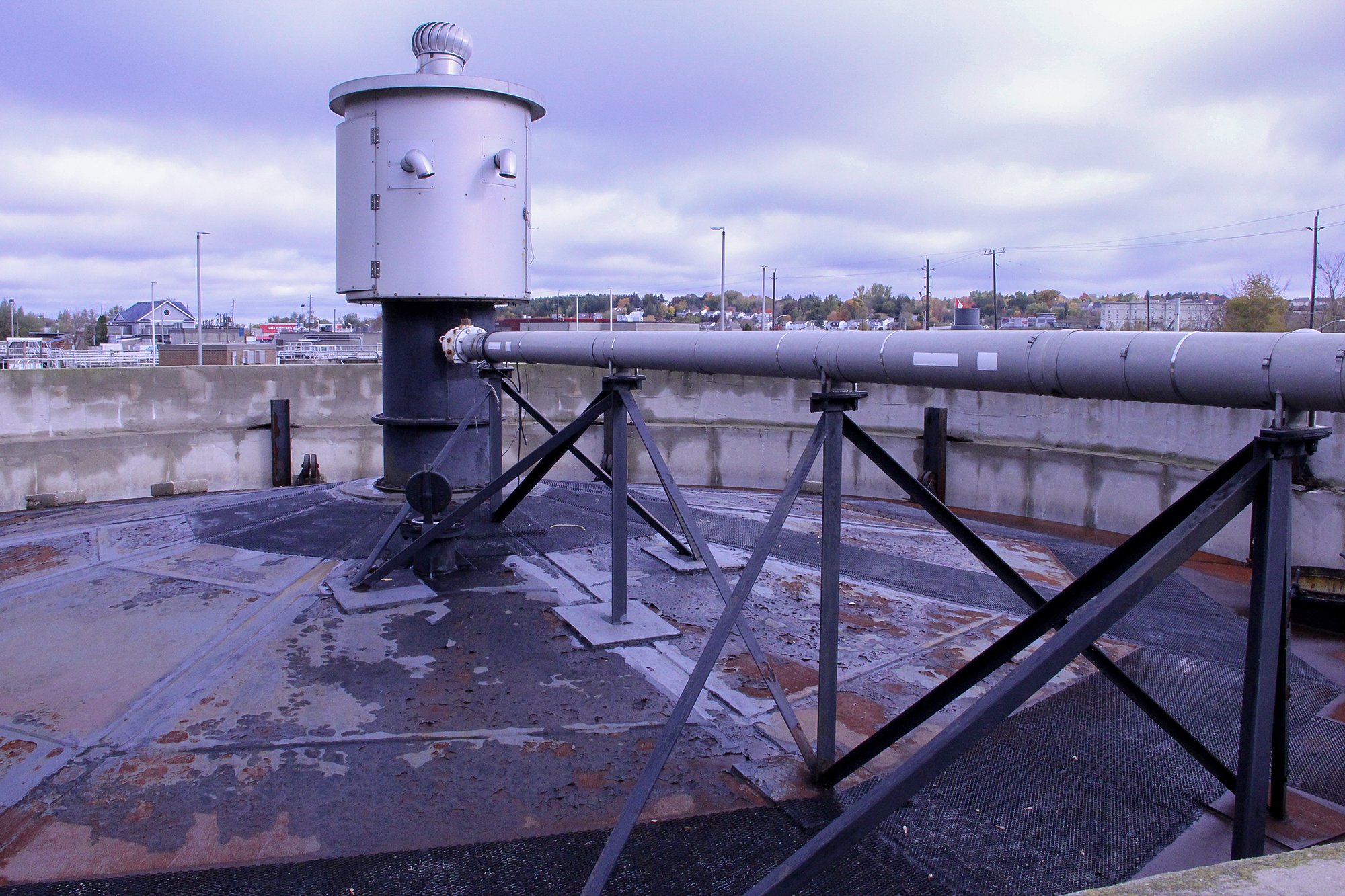
The Town of Orangeville’s Water Pollution Control Plant (WPCP) is embarking on a rehabilitation project, ensuring the plant can continue to perform at maximum efficiency and reducing emissions.
“The rehabilitation project will explore opportunities for energy recovery from the wastewater treatment process,” said Tim Kocialek, General Manager, Infrastructure Services. “For example, the design of the roof replacement on the digester that uses anaerobic digestion to treat solids; the anaerobic digestion creates an environmentally friendly renewable fuel called biogas. We’ll be exploring how this biogas could be used for on-site energy recovery.”
Currently, the WPCP accounts for a significant portion of the Town’s GHG emissions. One of the major parts of this project is rehabilitating Digestor 2. The work will see an increase in capacity for management of biosolids and could provide future opportunities towards a net-zero energy future.
“In 2021, Orangeville Council adopted an emissions reduction target of net-zero GHG by 2050,” said Mayor Lisa Post. “As Orangeville continues to grow, keeping the environmental impact in mind for projects and work we complete on Town facilities help us create a sustainable future for our community.”
The WPCP consists of two separate extended aeration facilities – the old plant and the new plant. These facilities introduce air into the processing water, creating a natural environment for microorganisms to grow and decompose organic waste. Both sections are responsible for wastewater generated by approximately 11,308 households within Town limits.
The rehabilitation project includes:
- Replacements on Secondary Clarifier 3
- Upgrades and replacements in Digester 2
- Replacing the two heat exchangers
- Structural rehabilitation of the Detritor, Digestor 2, and the Secondary Clarifier 3
- Replacement of the Digester Building Complex roof
- Electrical, instrumentation, and control upgrades related to equipment
“To complete the required work on the Detritor system - designed to remove grit like sand, fine gravel, and other solids from the raw sewage - and Clarifier 3 - used to remove particles and solids from liquid - a full shutdown of the old plant will be required,” added Kocialek. “Both systems were built as part of the upgrade and facility expansion in 1974. Once the project is complete, the upgrades and changes will increase performance, capacity, and efficiency, improve the lifespan of different buildings, and lower maintenance and operating costs related to heat loss.”
Plant shutdown will not impact how wastewater is processed for the community. Work that requires any systems to be shut down will be completed during the summer, when low flow conditions occur, mitigating any impact to services.
Rehabilitation work is set to begin this month and elements of the project will continue into 2024.
